Last Updated on November 14, 2024
Fruity rose hip tea is a tasty, antioxidant-rich beverage to enjoy often. Try this easy rosehip tea recipe and add it to your herbal tea rotation for a drink that’s both healthy and delicious.
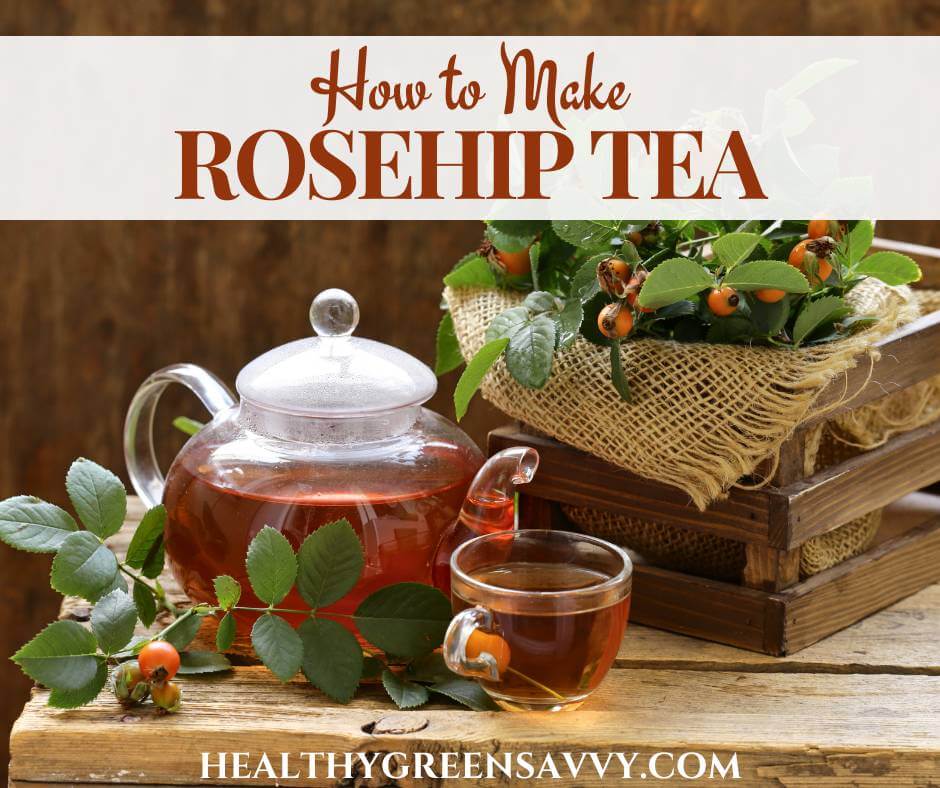
If you love fruity beverages, try some rose hip tea the next time you’d like something a little different in your teacup. Rosehip tea is lovely hot or cold, and it has some excellent medicinal properties that make it a valuable addition to your herbal tea repertoire.
WHAT ARE ROSE HIPS ANYWAY?
Rose hips (or rosehips — both spellings are used) are the fruit formed after rose flowers bloom. If you look on rosebushes in your yard or neighborhood in early fall, you’re sure to spot them.
Rosehip tea can be made with fresh rosehips if you’ve got access to them, but it can also be made anytime with dried rosehips, which are inexpensive when purchased in bulk and easy to find online.
WHY DRINK ROSE HIP TEA?
Well, first off, it’s yummy! If you like fruity, slightly tart beverages, you’ll love rosehip tea.
But maybe the more compelling reason to drink rosehip tea is how good it is for you. Like hawthorn berry tea, rose hip tea is rich in antioxidants, which can help reduce inflammation and oxidative stress.
Many fans of rose hip tea tout fresh rosehips’ vitamin C content, but it’s important to understand that vitamin C degrades with drying and heating. You’ll still get some vitamin C in your tea, but that’s not the main reason to drink it. Rosehips have lots more to recommend them!
Rosehips are rich in numerous phytonutrients and have been studied for a range of potential therapeutic uses, especially for reducing inflammation and pain relief.
A meta analysis found that rosehips may help arthritis pain, and a small study found reductions in blood pressure and cholesterol levels when a drink containing rosehip powder was taken daily for 6 weeks.
If you love exploring the power of plants to support health, be sure to check out some of the herbal books below!
Here are more of the best herbal books to add to your home reference library. If you’re interested in learning more about plant medicine, I also highly recommend the many wonderful courses offered by the Herbal Academy. Click the link below to see their course offerings.

WHERE TO GET ROSE HIPS FOR TEA
While you might find rosehips on your next foraging expedition, they’re inexpensive to buy in bulk. I don’t have a good place to forage rosehips, so I buy 1-pound bags to use for tea, elderberry syrup, and quick homemade rosehip jam.
If you’re someone looking for shortcuts, a big bag of dried rosehips saves a lot of time over foraging and preserving your own. Foraging is great fun if you have time and a place to collect them, but if you don’t, ready-to-go dried rosehips are excellent to keep in the pantry for when you want them.
–> If you’re already a forager, be sure to check out other wild teas to consider harvesting this season. If you’re not already a forager, you might be interested in our guide to wild edible plants for beginners.
I recommend getting chopped and de-seeded rosehips, which infuse better in water and can be used to make a fruity, tangy jam. The ones I get from Mountain Rose Herbs have been the best quality, chopped very small and without any seeds at all.
I’ve also tried Frontier’s “cut and seedless” dried rosehips. They make very flavorful tea, but when I’ve tried to use the pulp afterwards, I’ve found a decent number of seeds. If you’re just making tea this is fine, but if you want to eat the rosehips or use them in jam, you might need to watch out for seeds. Starwest is another reputable brand that sells dried rosehips in bulk.
Whole rosehips have tiny hairs and seeds inside, which you need to filter out if you cut the whole rosehips. Or you can simmer them whole and you won’t have to worry about them.
Rosehips are also an excellent addition to homemade elderberry syrup, adding some pectin to thicken, as well as flavor and antioxidants.
I learned from Rosalee de la Forêt that rosehips make an excellent addition to chia pudding.
RECOMMENDED GEAR
While you don’t need anything more than rosehips, water, and a pot to make tea, a few tools can help you make your rose hip tea as healthy as possible.
Most important is a quality water filter: Most water supplies contain numerous unregulated chemicals you don’t really want in your healthy cup of tea. Find out about choosing an effective water filter, as most common filters leave the majority of chemicals in your water.
Teapots with infusers also make steeping and straining loose tea much more convenient.
HOW TO MAKE ROSE HIP TEA TWO WAYS
As is the case with elderberry tea, you can get something pretty tasty by steeping your rosehips in boiling water, but to get their full benefits, herbalists recommend simmering them to make a decoction.
If you allow your rosehips to steep a good long time, though, the flavor of the tea made without simmering is very similar.
Tip: If you’re using chopped, seedless rosehips, don’t throw them out when you strain them for tea. The spent bits of rosehips are quite tasty and make nice additions to hot cereals and chia pudding. I’ve found the ones from Mountain Rose Herbs the most reliably free of seeds if you want to eat them rather than just steep them for tea.
Ever tried rosehip tea?
If you love trying new teas, check out our many other tea recipes and our gift ideas for tea lovers!
- Spruce tea
- Lemon balm tea
- Hibiscus tea
- Catnip tea
- Mulberry leaf tea
- Ginkgo biloba tea
- Birch tea
- Pine needle tea
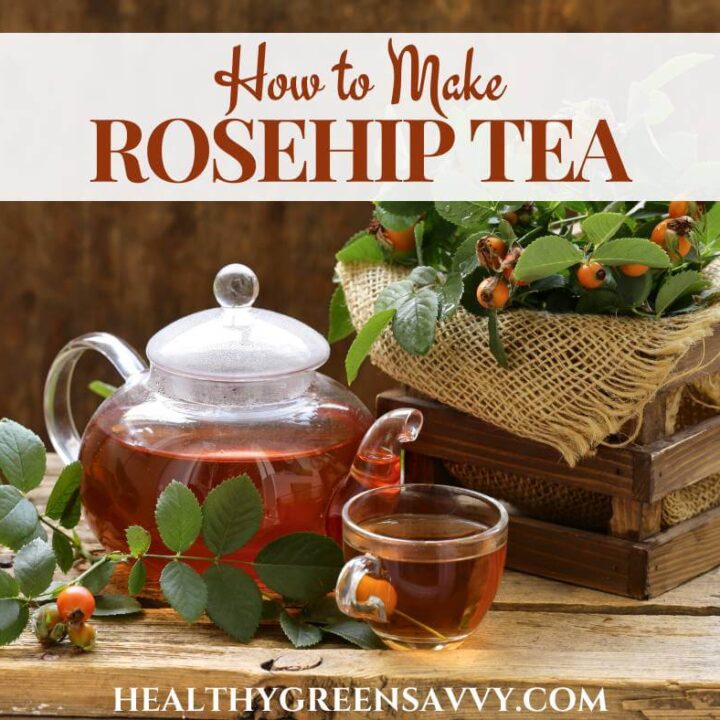
Easy Rose Hip Tea Recipe
This tangy and delicious rose hip tea is refreshing as well as really good for you!
Ingredients
- 2 tablespoons deseeded and chopped dried rosehips (or 1/2 cup whole rosehips)
- 2 cups boiled filtered water
Instructions
Method 1: Simmer (recommended)
- Place rosehips and water in a covered saucepan.
- Bring water to a boil, lower the heat, and simmer for 10 minutes.
- Allow to cool and strain.
Method 2: Steep
- Place dried rosehips in a teapot or French press. Chopped rosehips will infuse much better than whole ones.
- Cover with boiled water and allow to steep for at least 15 minutes, up to several hours.
- Strain and enjoy.
Notes
You can make a more concentrated decoction by increasing the amount of herb used. If it's too strong, dilute with hot water before drinking.
If you use seedless chopped rosehips, you can save them after you strain your tea and eat them with oatmeal or chia pudding.
Nutrition Information:
Yield: 2 Serving Size: 1Amount Per Serving: Calories: 0Total Fat: 0gSaturated Fat: 0gTrans Fat: 0gUnsaturated Fat: 0gCholesterol: 0mgSodium: 9mgCarbohydrates: 0gFiber: 0gSugar: 0gProtein: 0g
Nutritional information was auto-generated based on serving size, number of servings, and typical information for the ingredients listed. To obtain the most accurate representation of the nutritional information in a given recipe, please calculate the nutritional information with the actual ingredients and amounts used, using your preferred nutrition calculator. Under no circumstances shall this website or author be responsible for any loss or damage resulting for your reliance on the given nutritional information. You are solely responsible for ensuring that any nutritional information provided is accurate and complete.
Save this rose hip tea recipe for later!
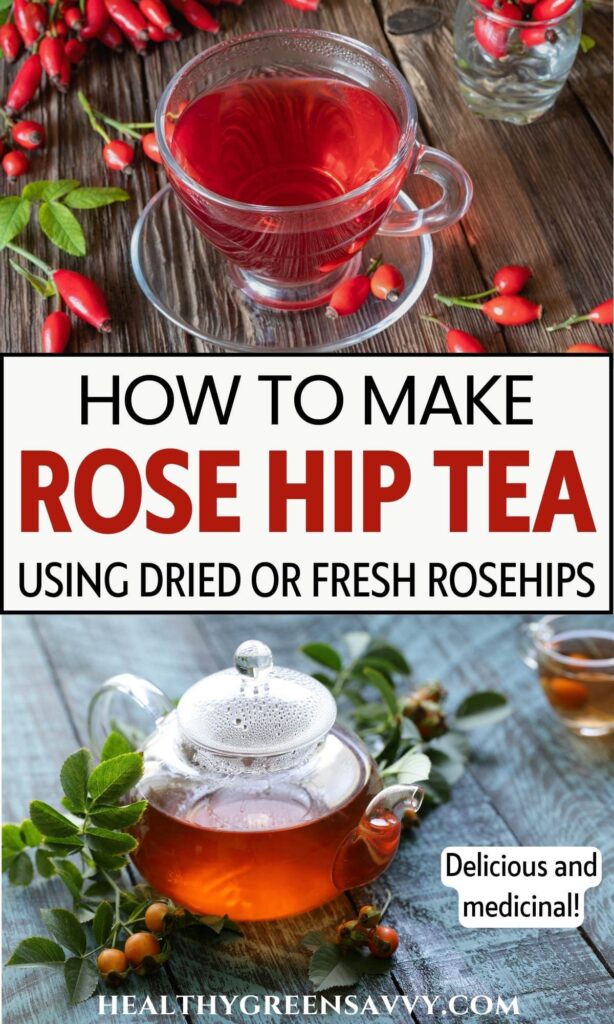
Additional rosehip tea photo credits in cover and pin: Olga Kriger and madeleinesteinbach
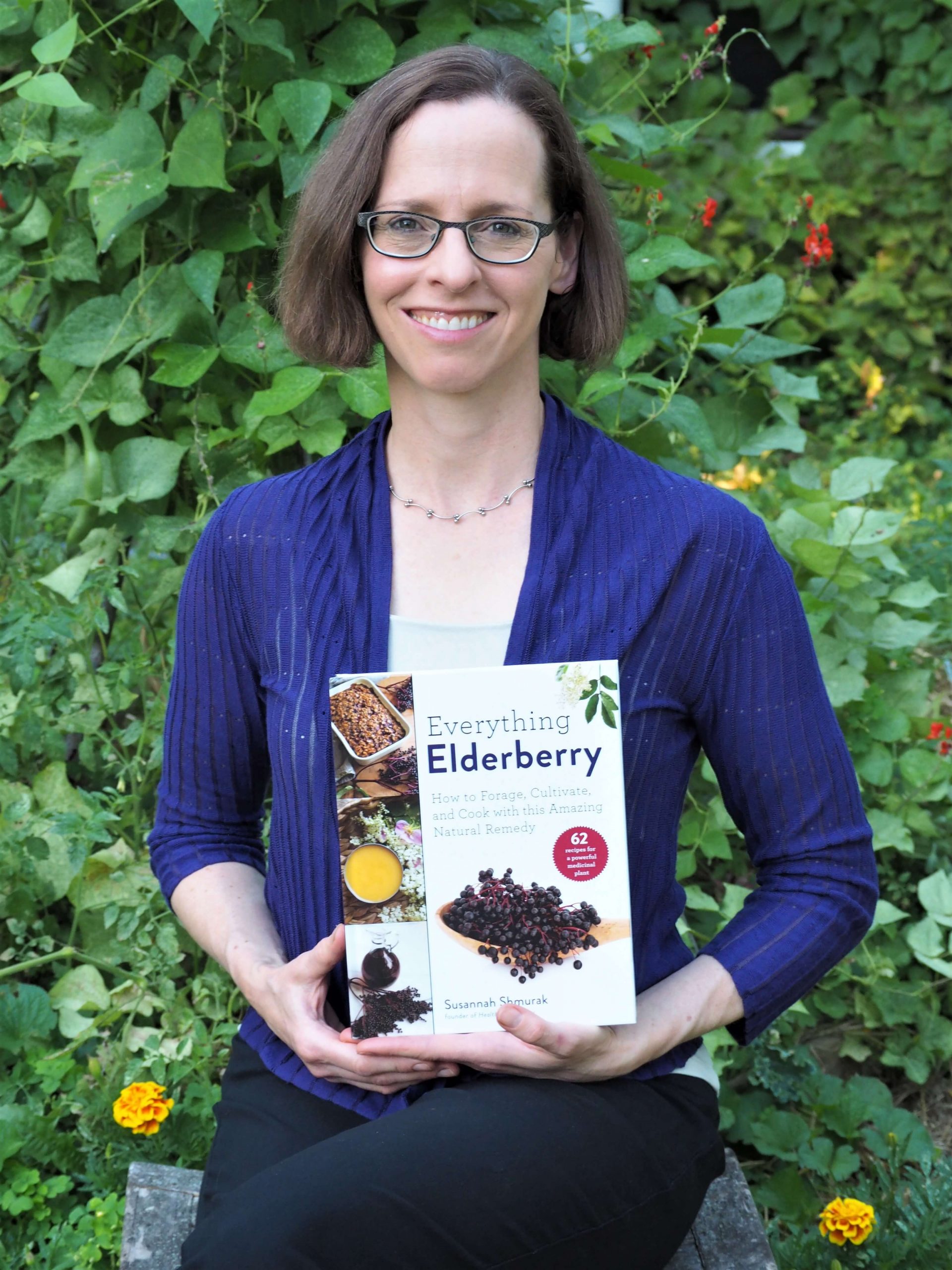
Susannah is a proud garden geek and energy nerd who loves healthy food and natural remedies. Her work has appeared in Mother Earth Living, Ensia, Northern Gardener, Sierra, and on numerous websites. Her first book, Everything Elderberry, released in September 2020 and has been a #1 new release in holistic medicine, naturopathy, herb gardening, and other categories. Find out more and grab your copy here.
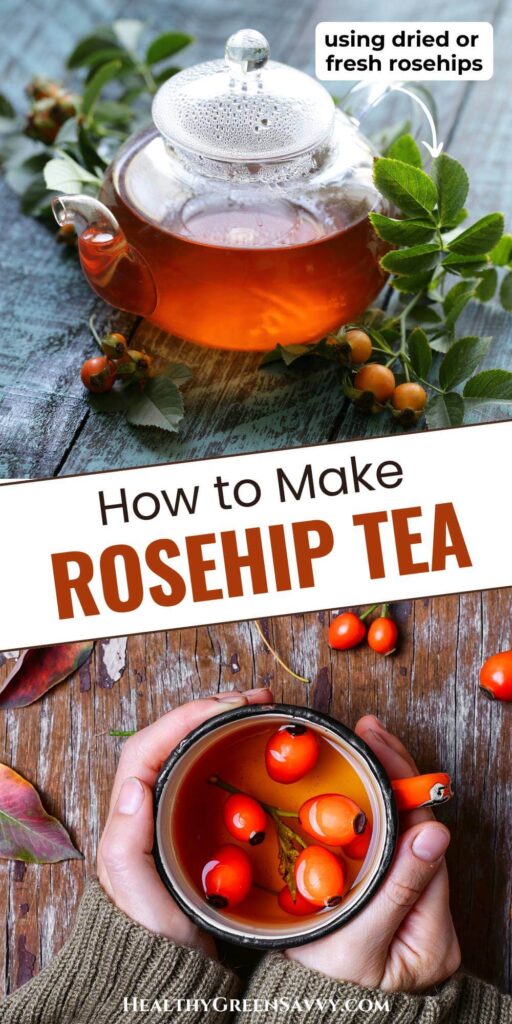
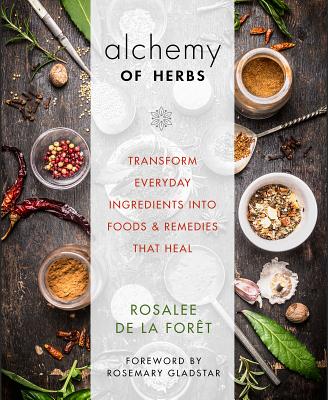
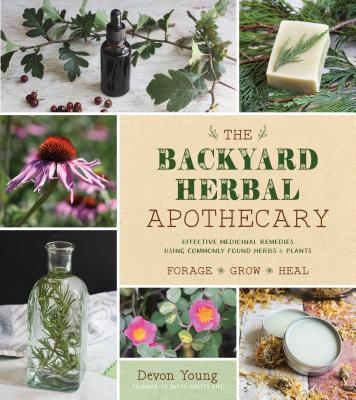



 Hi, I'm Susannah, a garden geek, energy nerd, and fan of healthy food and natural remedies. Need some simple, practical solutions for living healthier and greener? You've come to the right place! More about me and my green projects
Hi, I'm Susannah, a garden geek, energy nerd, and fan of healthy food and natural remedies. Need some simple, practical solutions for living healthier and greener? You've come to the right place! More about me and my green projects
Leave a Reply